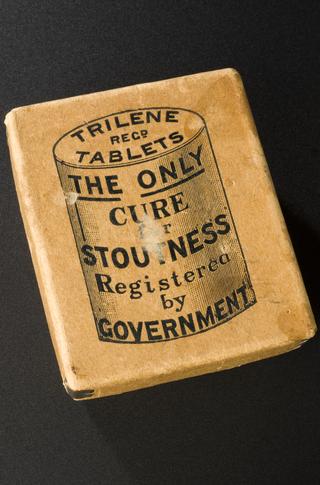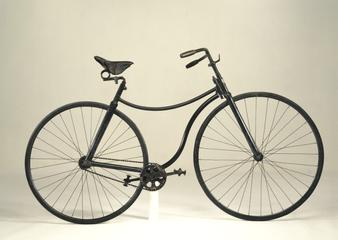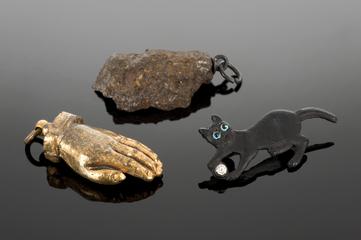

Metal shell fragment with metal mount and loop for attachment, used as an amulet charm, assumed to be German made and carried by a British soldier during the First World War, 1914-1918.
The carrying of ‘lucky charms’ – as protective amulets against ill health and physical danger – is common in many cultures around the world. Luck played a major role in combatant’s fate during the First World War, 1914-1918. As such, soldiers of all nations put great faith in lucky charms and amulets. Whether given by family and loved ones, bought commercially or chosen for personal significance, these special forms of protection were carried into battle. Here a piece of shrapnel, a fragment from an artillery shell (in the background), was carried as such an amulet by a soldier during the conflict.
Amulets of all shapes and forms were and still are considered by some people to provide good luck and protection against illness and danger. The amulet was part of the collection of Edward Lovett (1852-1933), a researcher and collector of folk traditions, and was bought by Henry Wellcome in 1930. It is shown here with two other First World War amulets (A79870 and A79871).
Details
- Category:
- Ethnography and Folk Medicine
- Collection:
- Sir Henry Wellcome's Museum Collection
- Object Number:
- A79904
- Materials:
- iron, ? material
- Measurements:
-
overall: 31 mm x 12 mm x 13 mm, .005kg
- type:
- amulet




